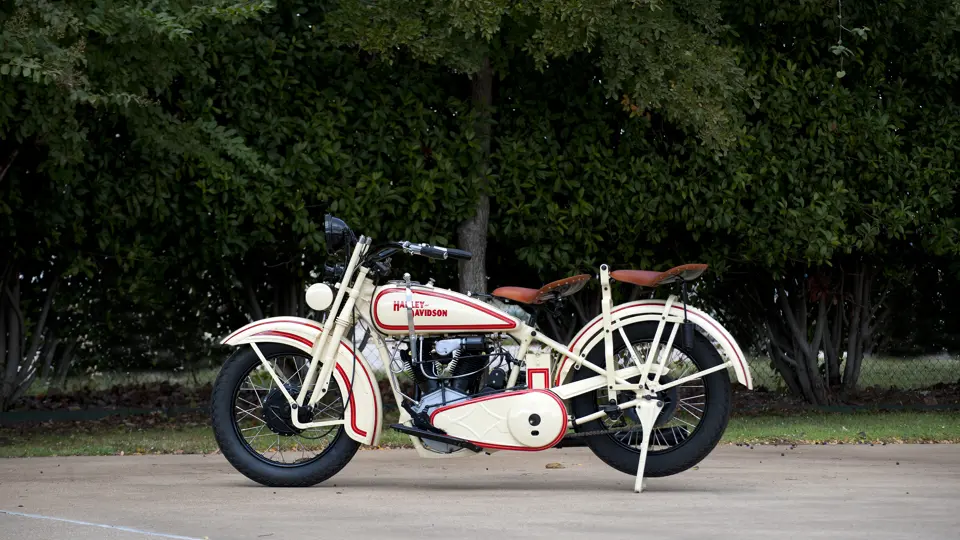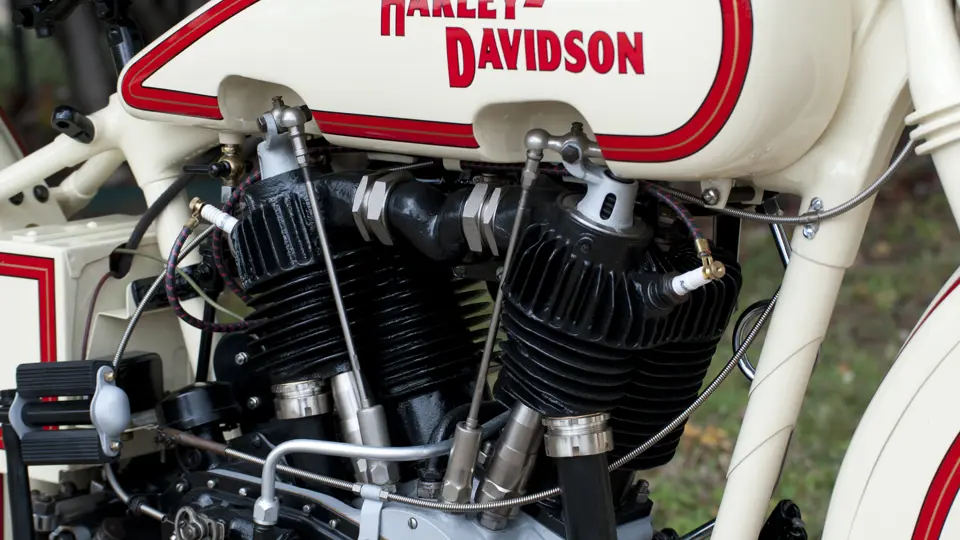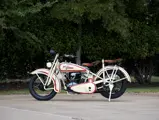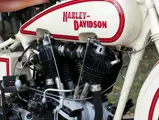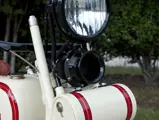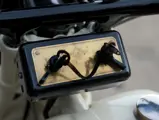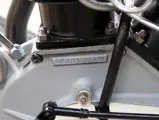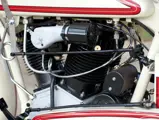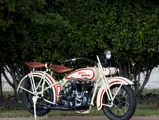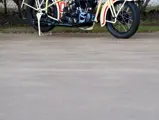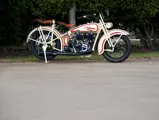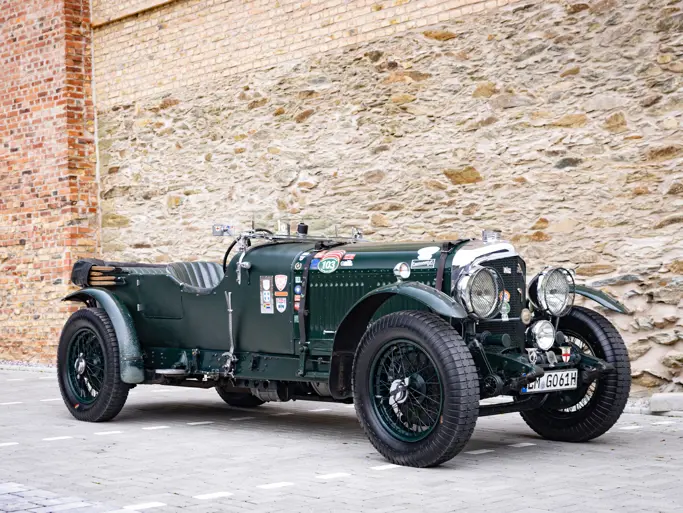74 cu. in. inlet-over-exhaust V-twin engine with Schebler carburetor, three-speed hand-shift transmission, Meisinger bucket saddle and buddy seat, sprung front forks, hard-tail rear-end, hand-operated front drum brake, and foot-operated rear drum brake. Wheelbase: 59.5 in.
Harley-Davidson’s first V-twin was introduced in 1909, but it really hit its stride in 1911 with the addition of a mechanical inlet valve—the so-called overhead “pocket valve”. In 61-cubic inch form, it would remain in production for 20 years. By 1914, the V-twin had gained chain drive and a proper clutch, and a three-speed transmission and kick-start (termed step-starter) followed soon after.
When the 74-cubic inch J model was introduced in 1922, the 22JD featured full electrical equipment, while the FD model was fitted with a magneto. It was capable of 40–60 miles per gallon, and the sidecar model had a plate that was fitted below the cylinder to lower compression.
The year 1924 introduced aluminum pistons and Alemite fittings, which meant a grease gun, which was included, could be used to force lubrication into bushings at 500 psi. The spindly look from the teens disappeared in 1926 with a major redesign, including a bigger, rounded tank and more comfortable handlebars.
A new frame lowered the rider by three inches, which improved the center of gravity and the handling, while a drop-forged crucible lower down protected the engine and stiffened the chassis. Later improvements included a front brake, stronger Sager forks, and full pressure lubrication, before the model was discontinued in 1929.
The bike on offer dates from 1928. The seller found a sound, running bike from California and treated it to a year-long, $40,000 restoration by American Pride Choppers in Fort Worth, Texas. It is finished in the correct cream color with red striping, and it has never been started since the work was completed, though it is said merely to need gasoline for that to be possible.
This superb Harley-Davidson presents its next owner with the opportunity to enjoy a “new” 1928 motorcycle, both to ride and show if he or she so desires. It’s bound to be a head-turner where ever it goes.




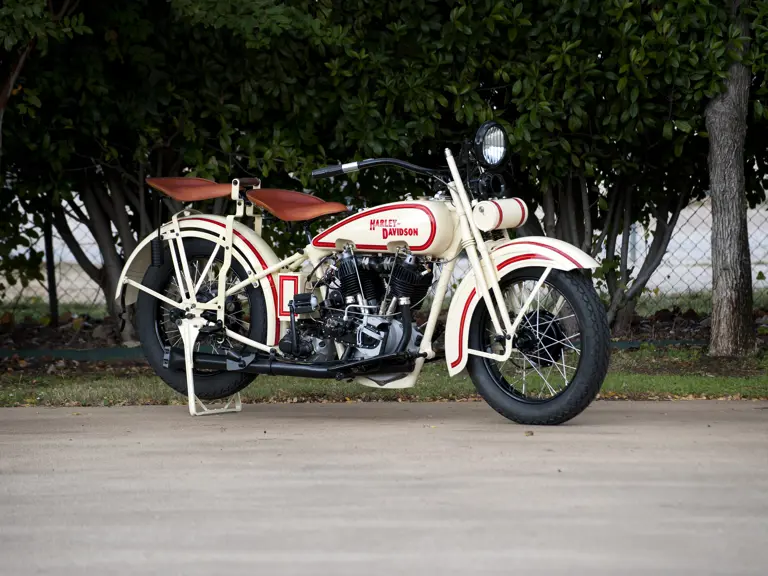
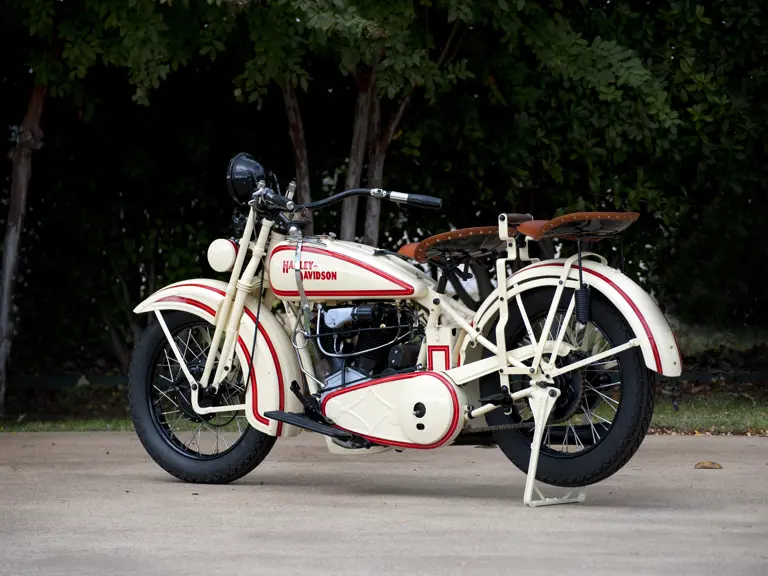
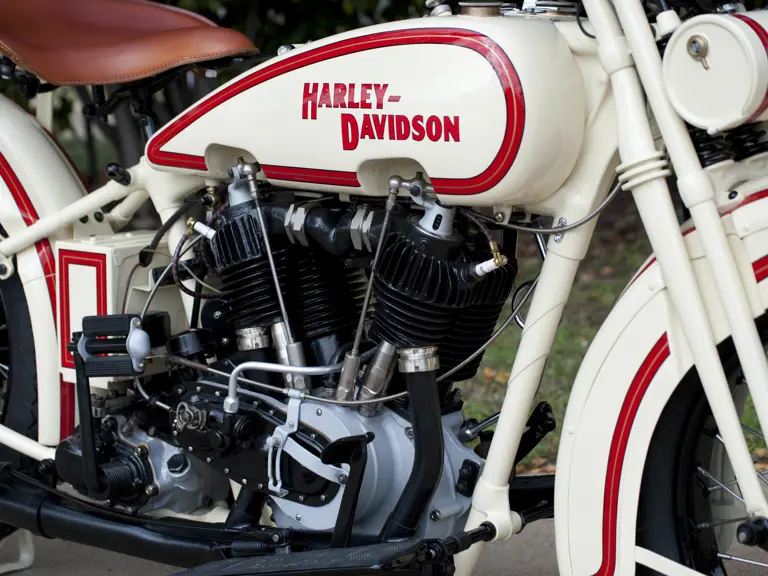

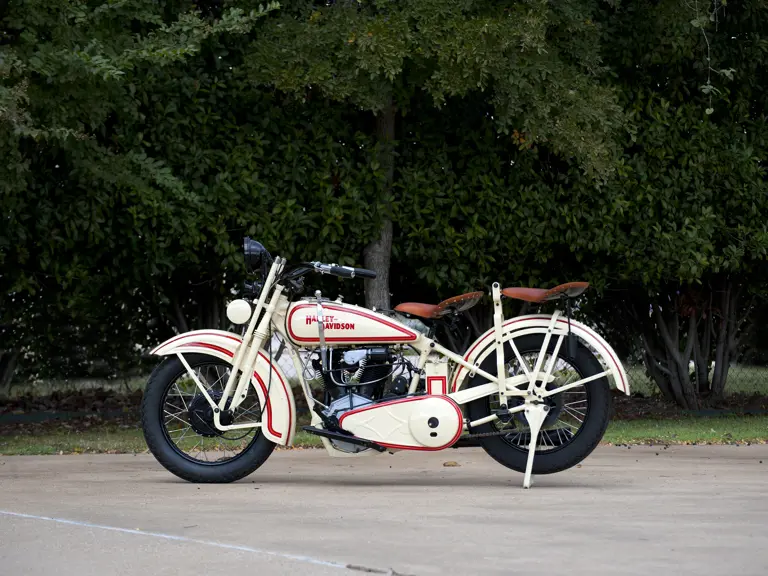
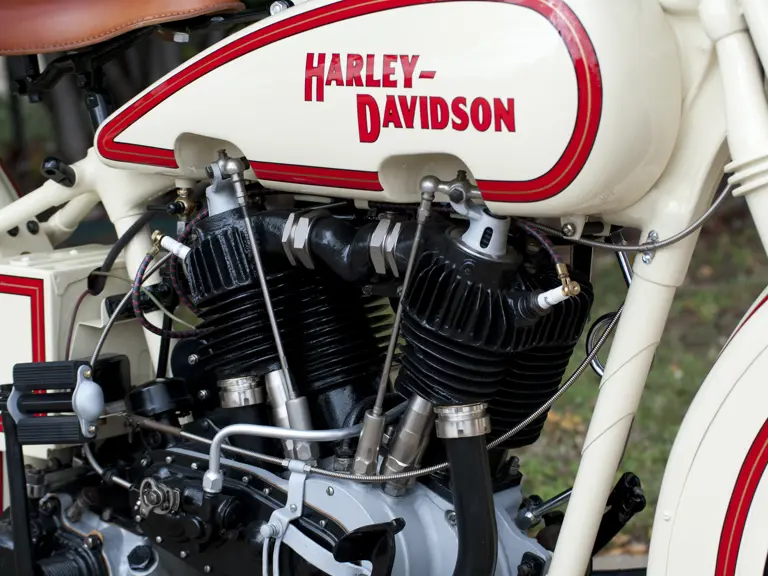
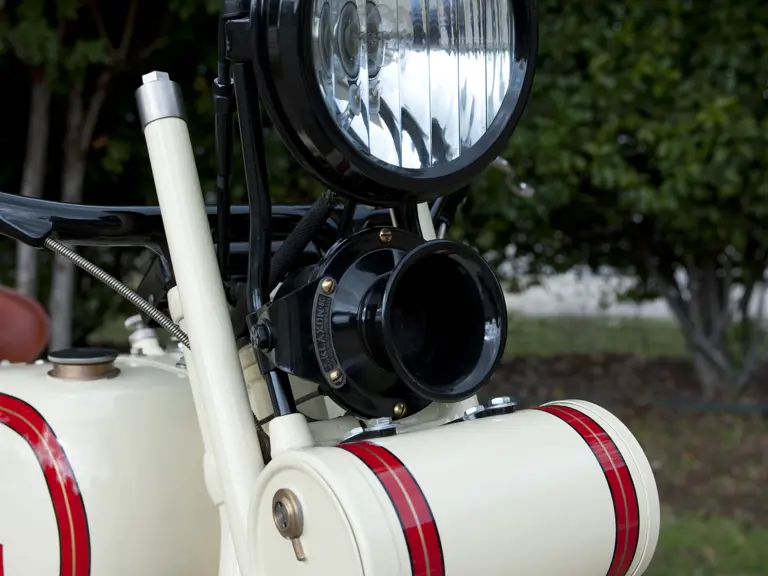
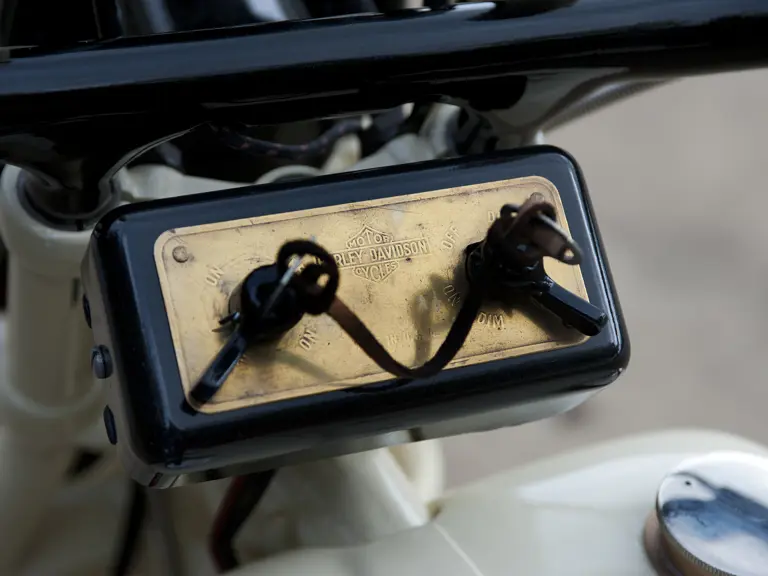
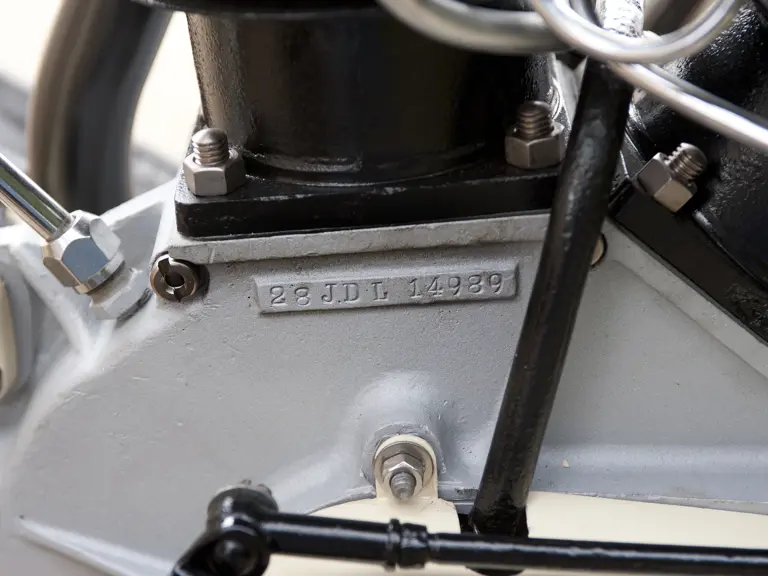
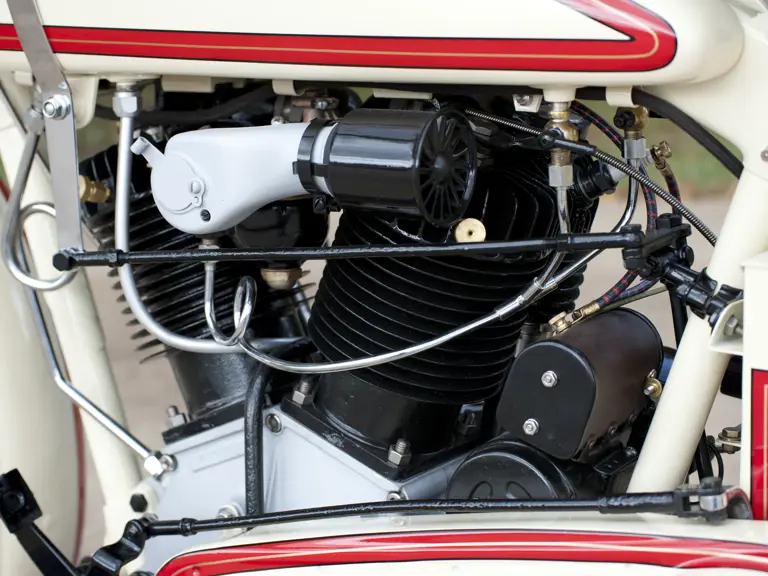
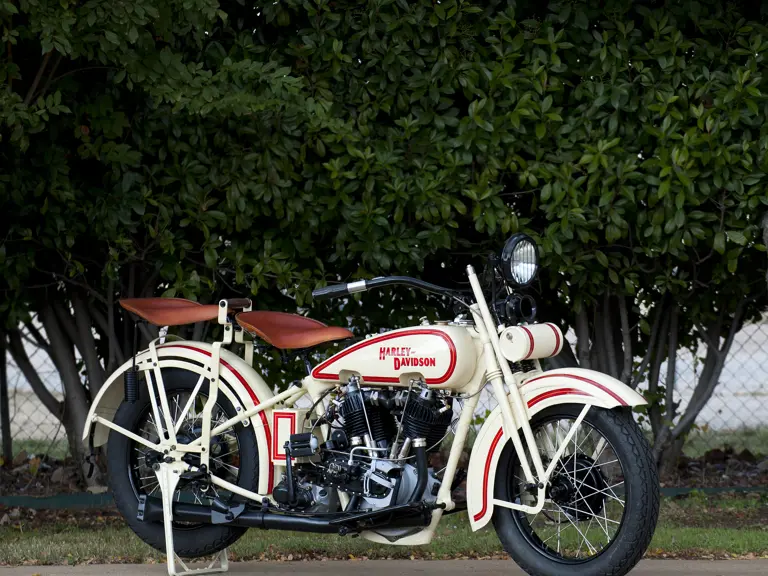
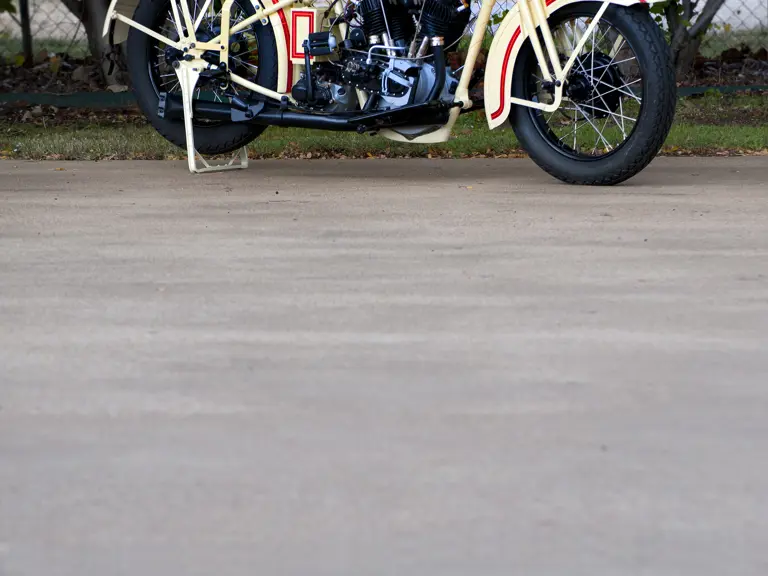
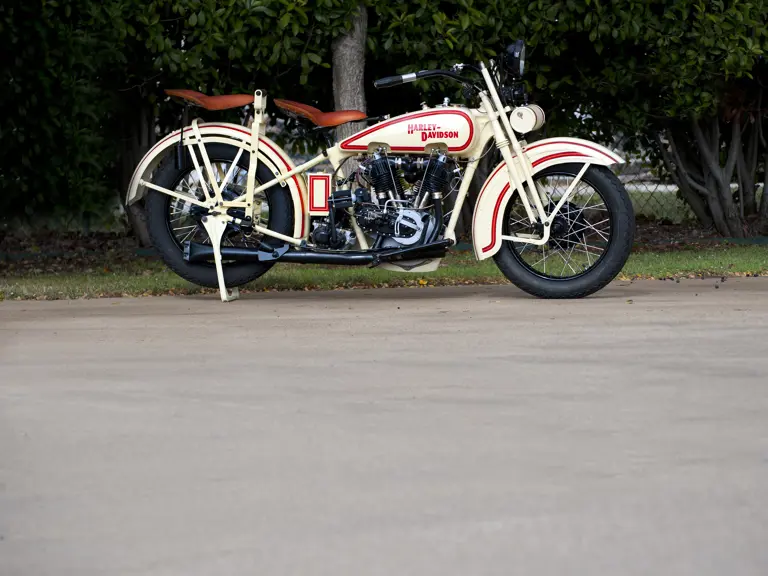

 | Amelia Island, Florida
| Amelia Island, Florida
